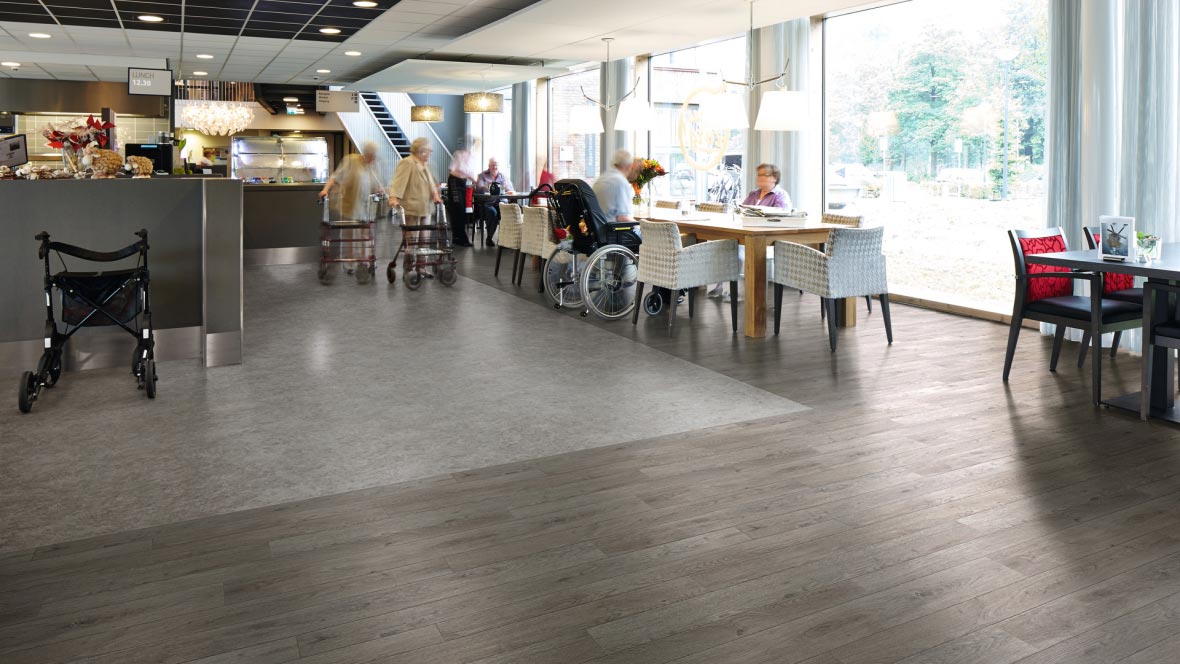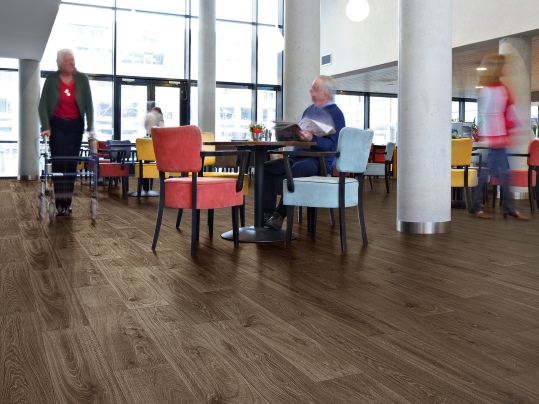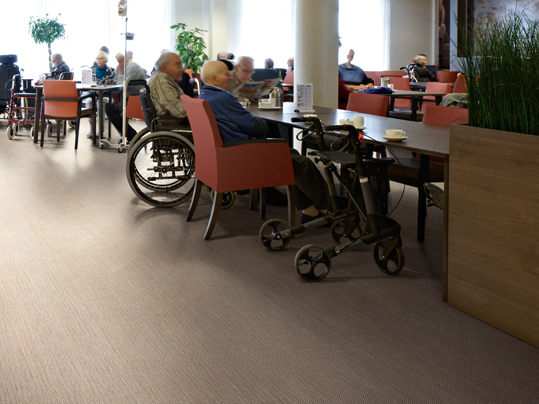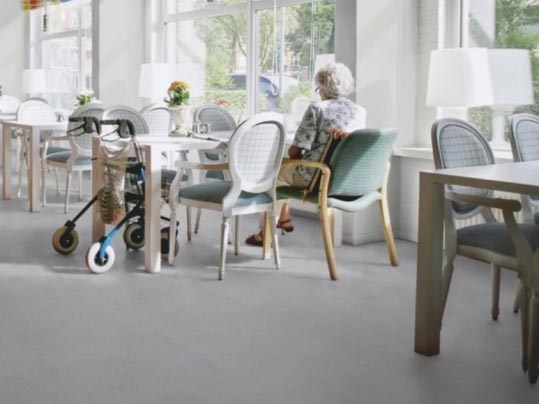World Alzheimer's Month
A Helpful Guide for Designing Dementia-Inclusive Interiors
September 2020

September marks the 9th World Alzheimer’s Month, an international campaign launched by Alzheimer’s Disease International (ADI) to raise awareness and challenge the stigma that surrounds dementia. This life changing disease currently affects an estimated 850,000 of us in the UK, and while this figure may seem shocking, it is sadly predicted to rise, reaching more than one million by 2025 and two million by 2051. Here, Donna Hannaway, our Segment Marketing Manager for the Care Sector at Forbo, explains the importance of designing a dementia-inclusive interior, with tips on how to achieve this.
With approximately 70 per cent of people in UK care homes living with dementia or severe memory problems, the pressure is on specifiers, interior designers and care home managers to carefully create an environment that is, not only welcoming and homely, but also designed with dementia in mind, helping to ensure the safety of residents, their well-being, quality of life and also encourage independent living.
Perhaps the first place to start when designing a dementia-inclusive interior is to ensure that you have a full understanding of the issues faced by those with the condition. After all, how can you correctly and successfully design a building if you don’t understand the needs of those using the space? People with dementia can experience a range of difficulties, including sensory, mobility or cognitive impairments, all of which can, in turn, make it difficult to understand and navigate the built environment around them.

It is crucial, therefore, that an understanding of these everyday difficulties is translated into a care facilities’ interior design, helping residents to feel both safer and more confident in their surroundings.
A key starting point to consider when designing the interior of any space is colour. Within a care environment, rather than colour being used primarily as an aesthetic feature, it is instead important to consider the ways in which colour and tonal contrasts can impact on those with dementia and subsequently affect how they perceive the space. For example, ensuring a colour or tonal contrast between the primary surface areas - such as walls and floors - is vital, particularly considering the visual impairments that the elderly may have, helping them to clearly differentiate between the different surfaces.
With this in mind, it also important to continue implementing colour contrasts when selecting furnishings, such as chairs and tables. Having furniture that clearly stands out from the floor, and likewise walls that contrast with the floor, can help to avoid confusion and enable residents to safely navigate their own way through a space, minimising the risk of falls.
That said, when it comes to specifying adjoining floors, sudden contrasts in colour and tone should be avoided. This is because a person with dementia may perceive colours, tonal variance, light reflectiveness and other textures as something they are not. For example, a dark area of entrance matting might be seen as a deep hole to be avoided, while contrasting transition slips may appear as a barrier to the eye of a dementia patient, potentially preventing them from entering a space entirely.
Designers and specifiers should also avoid installing flooring with:
• A heavily patterned design - patterns could be perceived as an obstacle to step over
• A shiny finish – could be perceived as being wet and lead to a slip risk

DSDC Guidance to Tonal Contrast Example

Dining Room in Aged Care Example
.jpg)
While a lot of attention is placed on how occupants of a space perceive their environment through sight, it is also important to consider interior design from an acoustic point of view. Care facilities, in particular, can understandably be noisy places, with staff working around the clock shifts, visitors and deliveries coming and going and the potential for noise from residents themselves. Not only could noise from high-traffic areas, such as corridors, disturb a person’s sleep but loud sounds can also cause someone with dementia to become agitated or distressed. Textile floor coverings are, of course, a good choice for helping to absorb sound waves. However, for spaces where a more hard-wearing flooring is required, such as corridors, entrance ways or eating areas, designers and specifiers should instead consider an acoustic floor covering, which can help to reduce impact sound and subsequently improve the well-being of residents.
There is a lot to consider in order to successfully design a dementia-inclusive space, making it important for designers and specifiers to first have an understanding of the different ways in which dementia patients could potentially view and interpret a space, so that this can then be translated into the interior design.
Correctly selecting the right surfaces, lighting, signage, colours and layout can all have a big impact on a person’s overall experience of the space, with the ability to navigate an environment safely and independently also helping to improve their confidence and general well-being.
For more information and guidance on flooring for dementia-inclusive spaces, please visit our designing for dementia web section

We have been working with the DSDC to review our portfolio, assessing and rating them in accordance with DSDC’s dementia design principles, so you can be sure that you’re making the right flooring choices. Indeed, it is also important to remember that for an environment to be considered ‘dementia-friendly’ or ‘dementia-inclusive’, a holistic approach should be taken to the whole specification process – and not just the flooring - as what works for one person, may not work for the other.
For more information on the Do's and Don'ts of designing dementia-inclusive interiors, Download our brochure